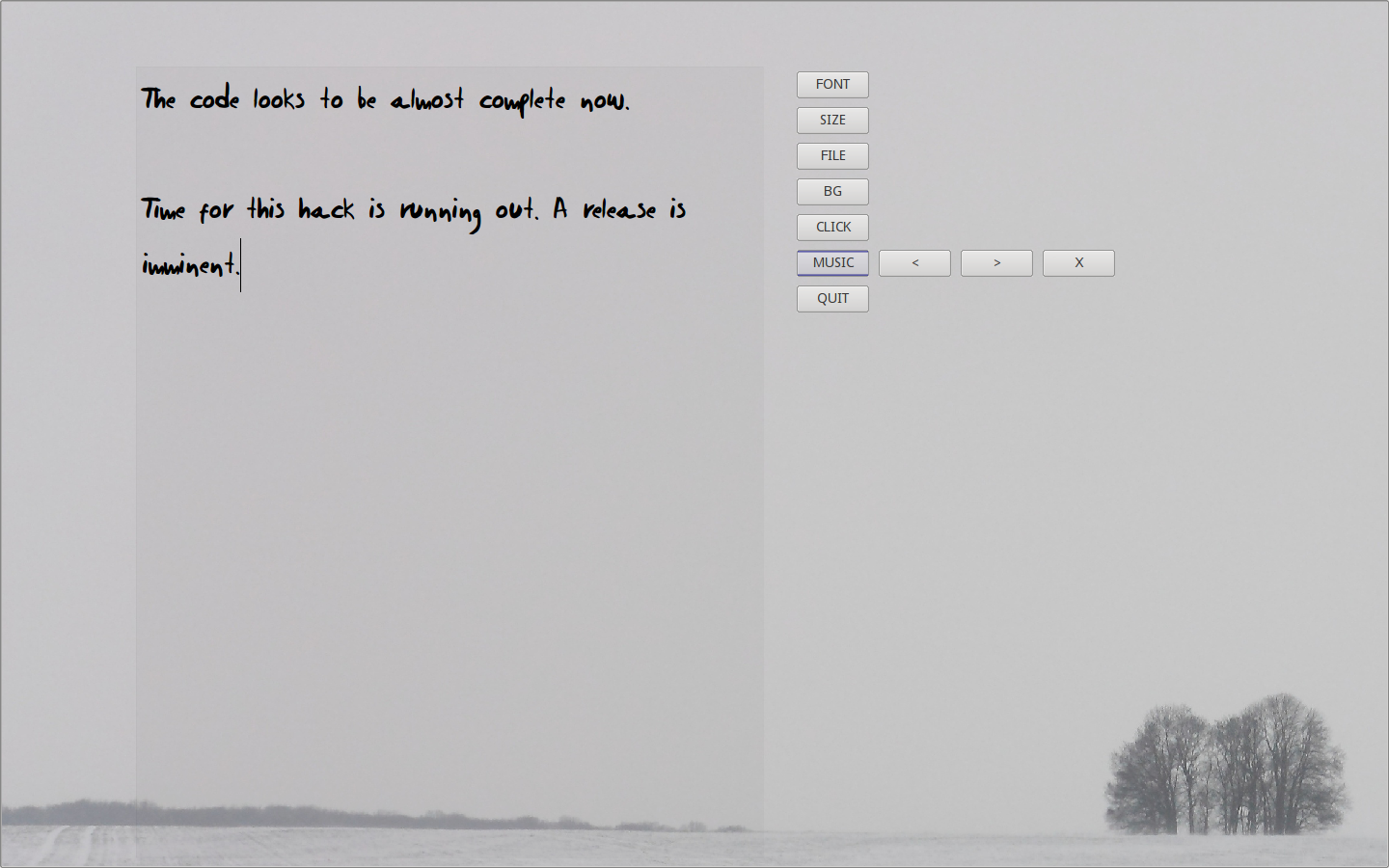New project: marave, a relaxed text editor
Announcement:
Marave (nothing, in guaraní) is a relaxed text editor. Its goal is to let you focus in your writing, free of visual distractions and clutter.
It is written using PyQt, so it should work in all major platforms, and it is licensed under the GPLv2 so it is free software.
You can find the current SVN (no release yet) at http://marave.googlecode.com
Screenshots:



Status:
It's not finished yet, but it has the following features:
You can edit text
Minimalistic, "vanishing" user interface
(Optional) audio feedback for the keyboard
(Optional) relaxing music (requires internet access)
You can customize the background, font, colours, and sounds
Live spell checking (requires pyenchant)
There are also some major missing features:
Search and Search/Replace is not implemented
UI customizations are not stored
UI has to be cleaned up a lot more
It doesn't ask to save when closing
Autosave not implemented
And at least one known bug:
In windows the widgets are not well placed Fixed in SVN
A litte history:
A few days ago, I saw ommwriter mentioned in a tweet or something similar.
I was thinking "nice thing", but in the back of my mind I was also thinking "that can't be too hard to do". After all, the hard part of creating a program is making it do things, right?
Well, yes and no. I did manage to create a somewhat reasonable facsimile in a day, but tweaking the looks of it is driving me nuts :-)

